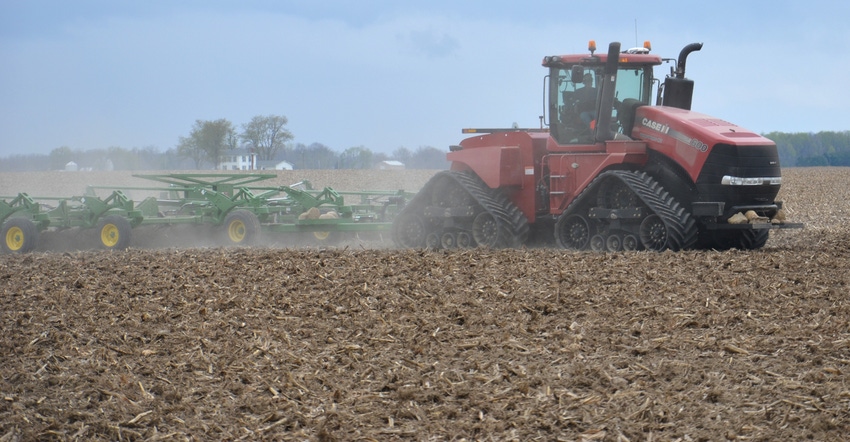
You know soil compaction is a real threat. What can you do to reduce your odds for creating soil compaction that will hamper root and crop growth this year?
“The best way is to stay off soils if they’re wetter than they should be,” says Mark Jeschke, agronomy manager for Pioneer. “When you feel you must go anyway, there are some ways to reduce the amount of soil compaction you create in the surface soil.
“However, most of the soil compaction created in the subsoil is based largely on axle loads. You may have fewer options in taking steps to reduce deeper soil compaction.”
Here are suggestions for minimizing soil compaction in the upper soil profile:
Tire pressure. “Lower tire inflation pressure can help create less soil compaction near the surface,” Jeschke says. “Back off as much as you can based on the type of tire you’re running. Pay attention to the manufacturer’s suggested tire pressures.”
Jeschke cites a study that shows that at a tire inflation pressure of 22 pounds per square inch, maximum pressure on the soil at 4, 12, 20 and 28 inches will be 25, 26, 3 and 3 psi, respectively. Drop inflation to 15 psi in the tire and the soil will see pressures of 20, 15, 4 and 3 psi, respectively. At 10 psi in the tire, the soil sees 16, 15, 4 and 3 psi. Note that lower pressure helps at shallower depths, not deeper depths.
The trade-off is that with some tires, lower inflation pressures may work well in the field but not as well on the road during transport, Jeschke notes. Some companies now offer systems that allow you to monitor tire pressure and increase it automatically when you’re going onto the road.
Tire configuration. Studies show duals and triples help reduce pressure on the soil at shallow depths, but the effects become minimal at the deepest depths measured, Jeschke says. While duals reduce potential soil compaction in the upper few inches, they do increase the amount of soil receiving a track.
Number of passes. Conventional wisdom holds that most soil compaction is created on the first pass. Jeschke says research puts it at 70% to 80% of total soil compaction created per season. However, this doesn’t mean you can continue driving over the same tracks with no more effect, he says. “Studies show that repeated passes may cause as much damage to crop growth because the soil is already above optimum bulk density,” he says.
Tracks vs. tires. Tracks can help reduce surface area soil compaction because they increase the amount of surface contact area, Jeschke says. “However, the question of whether tracks provide an advantage over tires in reducing soil compaction isn’t necessarily straightforward,” he says. “It seems to depend on the specific track and tire configurations being compared.”
An Ohio State University study shows that duals or wide tires at lower inflation pressures exerted less pressure than tracks, which exerted less pressure than a single tire at 34 psi.
About the Author(s)
You May Also Like




